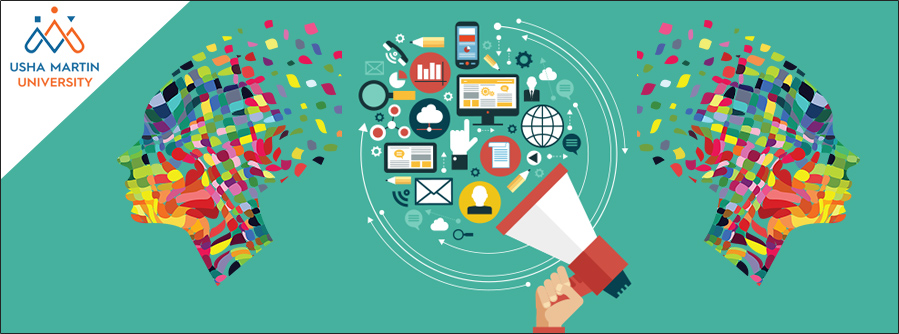
LL.M Course: A Master’s Degree Program for a Rewarding Career in Law
February 25, 2021
Why Would You Choose Usha Martin University?
March 23, 2021According to Sabyasachi Dasgupta, cultural hybridization is “the concept of cultural junctions where different cultures arrive, meet and collide with each other and reformed into a hybridized culture that has its own identity and language”. I understand that this term signifies unity in diversity and the inter-relationship of language and culture. The major reasons responsible for cultural hybridization are intercultural communications, cross-cultural communications, migration, global investments, foreign trade, tourism, world media and international communications and technologies. To me, Dr Homi K. Bhabha symbolises ‘hybridity’.
Advertisement is the easiest method through which cultural hybridization takes place. Advertising is non personal and paid form of communication of a product or service with an identified sponsor. It is intended to inform and influence the readers, listeners and viewers. From early morning to late night, we encounter various advertisements which may not only influence but also manipulate and shape our values, beliefs and behaviors in long term and get involved in our lifestyle.
Indian people nowadays do not compromise on quality. Linguistic hybridization is the merging of two or more languages to form new one like Hinglish, code-mixing of English and Hindi. Diverse Hindi TV advertisements carry several elements of hybridization to bridge the obstacles in different languages and reach the audiences effectively. Currently, this technique of creative mixing of languages is commonly used to represent and promote different cultures.
Optimistically, the socio-economic political and cultural dimensions of globalization, have significant force in creating and proliferating cultural hybridization. With technological advancement, the world has turned into a global village. It has essentially speaking, resulted in “globalization”– a combination of the “global” and the “local” and being vocal about local. Hybridized marketing and advertising strategies undoubtedly are benefitting the Indian market as far as education, particularly higher education, is concerned. Millions of our youth, go to educationally advance countries such as US, UK, Russia, China, Australia, New Zealand and European countries to learn about front-ended areas in latest fields. Many of the return to their motherland and groom local talent. With revolutionary developments in web based technologies, digital learning and on-line education have acquired global dimensions.
Usha Martin University, with its young, dynamic and devoted faculty, has developed expertise in digital teaching–learning and is in the process of developing several PG programmes on-line. It hopes to contain migration of Jharkhand students away from home in terrible times such as these. Its offerings in Journalism and Mass Communication are intended to impact the lives of people of the state educationally and professionally.
Dr. Rashmi Kumari
Assistant Professor
Faculty of Journalism and Mass Communication
Usha Martin University, Ranchi




